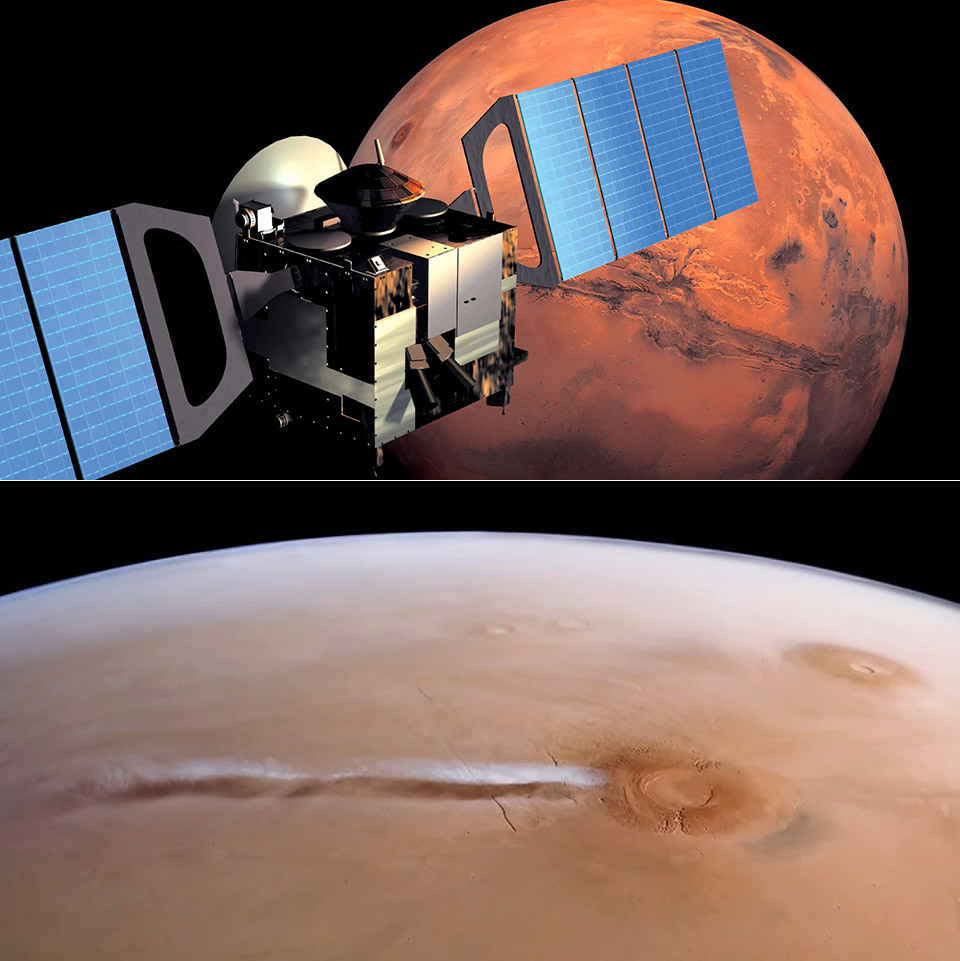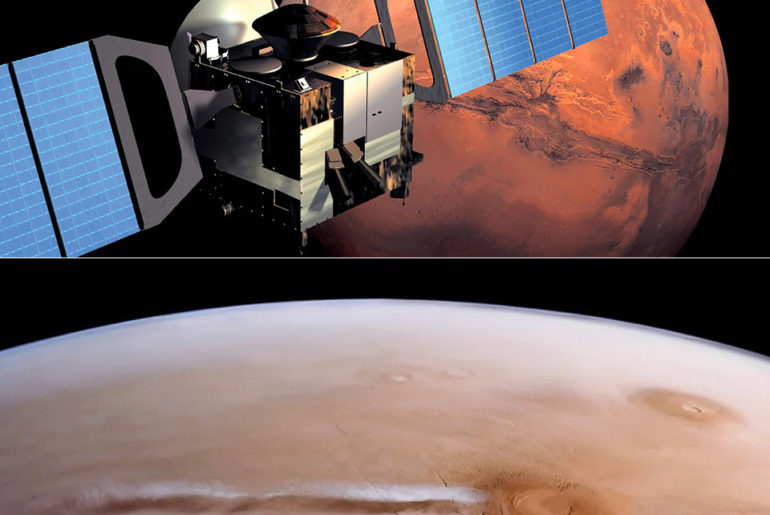
This isn’t a massive Martian dust storm, but rather the unusual Arsia Mons Elongated Cloud (AEMC) that returns to Mars each year. Why? Well, the 1,100-mile cloud returns every spring because 5% – 10% of the planet’s atmosphere has the perfect conditions to make recreate it, although a probe would need to study the water ice contain within to confirm this.
In other words, it forms basically as a result of wind being forced upwards by topographic features, like mountains or volcanoes, on a planetary surface. Arsia Mons pierces the martian atmosphere to trigger the formation of the cloud, as moist air is driven up the flanks of the volcano in updrafts, later condensing at higher, and far cooler, altitudes. The cloud starts growing before sunrise on the western slope of Arsia Mons before expanding westwards for 2.5-hours, before expanding and detaching from its initial location. It’s then pulled further westwards still by high-altitude winds, before evaporating in the late morning as air temperatures increase with the rising Sun.
- POWERFUL TELESCOPE FOR ASTRONOMY BEGINNERS: The AstroMaster 130EQ delivers sharp optics, a stable equatorial mount, and smooth manual controls, making...
- HIGH-QUALITY 130MM OPTICS: Enjoy views through the 130mm (5”) Newtonian reflector, which features high-quality aluminum and SiO₂ coatings and...
- SMOOTH, ACCURATE POINTING: Effortlessly aim and center your target using the two slow-motion control knobs for right ascension and declination whether...


Many Mars orbiters cannot begin observing this part of the surface until the afternoon due to the properties of their orbits, so this really is the first detailed exploration of this interesting feature – and it’s made possible by not only Mars Express’ diverse suite of instruments, but also its orbit,” said Agustin Sánchez-Lavega, co-author, also of the University of the Basque Country and Science Lead for the VMC.







